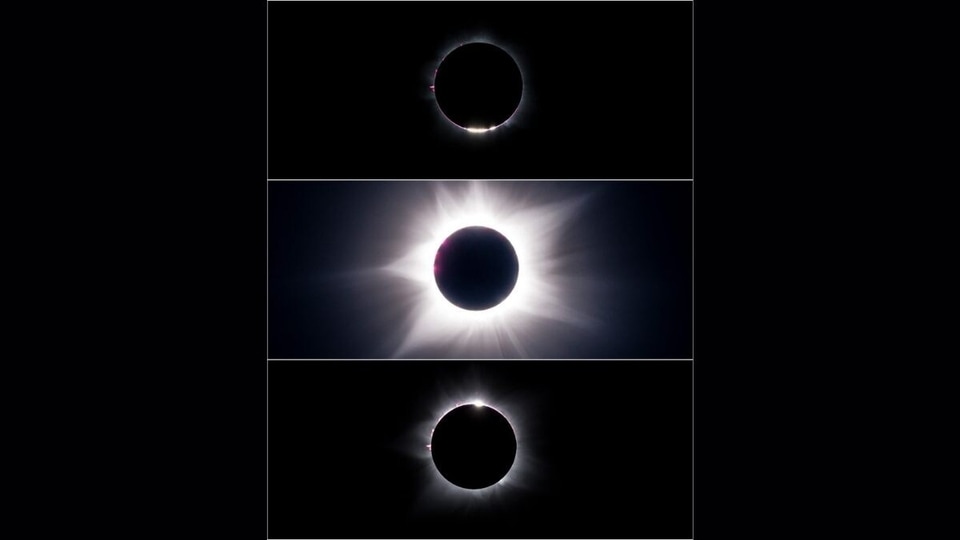NASA Astronomy Picture of the Day 21 April 2023: Hybrid Solar Eclipse in Western Australia
Today’s NASA Astronomy Picture of the Day is a snapshot of the Hybrid Solar Eclipse which occurred yesterday, April 20.

A solar eclipse happens when the Moon moves between the Sun and Earth, casting a shadow on Earth, fully or partially blocking the Sun's light in some areas. Depending on how they align, eclipses provide a unique, exciting view of either the Sun or the Moon, according to NASA. There are multiple types of solar eclipses – Annular, Total and Partial. But there's one phenomenon when the solar eclipse shifts between Annular and Total due to Earth's curvature, known as a Hybrid Solar Eclipse.
Today's NASA Astronomy Picture of the Day is a snapshot of the Hybrid Solar Eclipse which occurred yesterday, April 20. Before this, a hybrid eclipse was seen in 2013 and it will not be seen again till 2031. And after that? There will be no hybrid solar eclipse till 2164. It crossed over remote parts of Australia, Indonesia and East Timor and was live streamed by websites such as Perth Observatory, and the Gravity Discovery Centre and Observatory and more. According to NASA, this hybrid solar eclipse lasted just 62 seconds.
The picture was captured by astrophotographer Gwenael Blanck.
NASA's description of the picture
Along a narrow path that mostly avoided landfall, the shadow of the New Moon raced across planet Earth's southern hemisphere on April 20 to create a rare annular-total or hybrid solar eclipse. A mere 62 seconds of totality could be seen though, when the dark central lunar shadow just grazed the North West Cape, a peninsula in western Australia.
From top to bottom these panels capture the beginning, middle, and end of that fleeting total eclipse phase. At start and finish, solar prominences and beads of sunlight stream past the lunar limb. At mid-eclipse the central frame reveals the sight only easily visible during totality and most treasured by eclipse chasers, the magnificent corona of the active Sun. Of course eclipses tend to come in pairs. On May 5, the next Full Moon will just miss the dark inner part of Earth's shadow in a penumbral lunar eclipse.
Catch all the Latest Tech News, Mobile News, Laptop News, Gaming news, Wearables News , How To News, also keep up with us on Whatsapp channel,Twitter, Facebook, Google News, and Instagram. For our latest videos, subscribe to our YouTube channel.
































